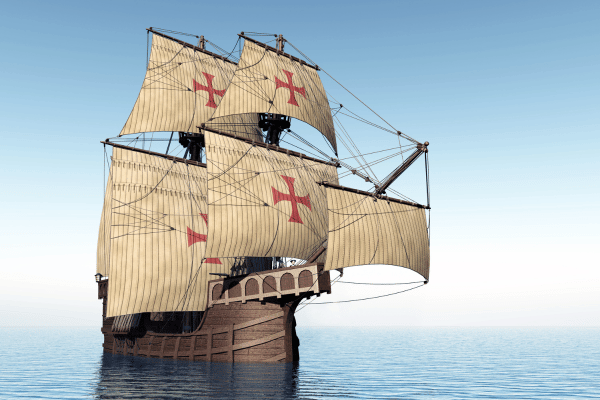Portuguese influence in Sri Lanka: A journey through history – By Nadeeka – eLanka

Sri Lanka has a rich and diverse history, with many cultures leaving their mark on the island over the centuries. One of the most significant influences was that of the Portuguese, who arrived in Sri Lanka in the early 16th century. Their arrival marked the beginning of a new era in Sri Lankan history and left an indelible mark on the country’s culture, language, and architecture.
The arrival of the Portuguese in Sri Lanka
The Portuguese first arrived in Sri Lanka in 1505, led by Lourenco de Almeida. They came to establish a foothold in the Indian Ocean and to control the spice trade, which was highly lucrative at the time. The Portuguese established their first settlement in Sri Lanka at Colombo, which they used as a base for further expansion.
The Portuguese quickly established their dominance over the island, taking control of the major ports and cities. They introduced a new form of government, with governors appointed to oversee the different regions of the island. They also brought their language and religion, with Portuguese becoming the language of the ruling elite and Roman Catholicism the dominant religion.
Portuguese architecture in Sri Lanka
One of the most visible legacies of the Portuguese in Sri Lanka is their architecture. The Portuguese built many churches, forts, and other structures throughout the island, which still stand today. One of the most impressive examples is the fort at Galle, which was built in the late 16th century and is now a UNESCO World Heritage site.
The Portuguese also introduced new building techniques and materials to Sri Lanka. They used coral and limestone to construct their buildings, which gave them a distinctive look and helped them withstand the tropical climate. They also introduced the use of lime mortar, which allowed them to create more elaborate decorative features on their buildings.
The Portuguese and Sri Lankan culture
The Portuguese had a significant impact on Sri Lankan culture, particularly in the areas of food and music. They introduced new crops to Sri Lanka, including chili peppers, tomatoes, and potatoes. They also introduced new cooking techniques, such as baking and stewing, which are still used in Sri Lankan cuisine today.
The Portuguese also had a significant influence on Sri Lankan music. They introduced new musical instruments, such as the violin and the guitar, which were quickly adopted by Sri Lankan musicians. They also introduced new musical styles, such as the Baila, which is a form of dance music that combines African and Portuguese rhythms.
The end of the Portuguese era in Sri Lanka
The Portuguese era in Sri Lanka came to an end in the early 17th century when the Dutch arrived on the island. The Dutch quickly established themselves as the dominant power, taking control of the ports and cities previously held by the Portuguese. The Dutch also introduced their language, religion, and architecture to Sri Lanka, which further enriched the island’s cultural heritage.
Today, Sri Lanka is a multicultural society, with influences from many different cultures, including the Portuguese. The legacy of the Portuguese can still be seen throughout the island, in its architecture, cuisine, and music. Their impact on Sri Lanka’s history and culture is a testament to the enduring power of cultural exchange and the importance of preserving our shared heritage.
here are some additional details about Portuguese influence in Sri Lanka:
- Portuguese Language: The Portuguese language had a significant impact on Sri Lanka’s culture, particularly among the ruling elite. Portuguese became the language of the courts, and many legal documents and official communications were written in Portuguese. Today, some Sri Lankan Portuguese Burghers still speak a creole version of the Portuguese language.
- Christianity: The Portuguese brought Roman Catholicism to Sri Lanka and built many churches throughout the island. They also established schools and other institutions to promote the Catholic faith. Today, Catholics make up around 6% of Sri Lanka’s population, and many of the country’s religious festivals and traditions have a Portuguese influence.
- Fortifications: The Portuguese built many fortifications throughout Sri Lanka to protect their territory from rival powers. Some of the most significant examples include the forts at Colombo, Jaffna, and Galle. These forts were constructed using European architectural techniques and were designed to withstand attacks from both land and sea.
- Spice Trade: The Portuguese played a crucial role in the spice trade, which was a major source of wealth for Sri Lanka at the time. They established trade routes with Europe and other parts of Asia, exporting spices such as cinnamon, cloves, and nutmeg. The Portuguese also introduced new crops and agricultural techniques to Sri Lanka, which helped to boost the island’s economy.
- Art and Literature: The Portuguese had a significant impact on Sri Lankan art and literature. They introduced new styles and techniques, such as the use of perspective and the incorporation of European motifs. The Portuguese also encouraged Sri Lankan artists to create works of art that reflected their own culture and traditions. Some of the most notable examples of Portuguese-influenced Sri Lankan art include the Kandyan paintings and the Manjarabadu manuscripts.
Overall, the Portuguese had a significant impact on Sri Lanka’s culture, history, and economy. Their legacy can still be seen throughout the island today, and their influence on Sri Lanka’s architecture, cuisine, and music is an important part of the country’s cultural heritage.







